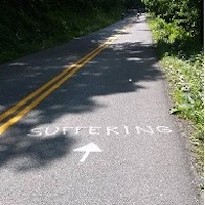Creating benchmarks and rewarding yourself for completing them is a classic strategy athletes use to get through a long and challenging event. I bet you have used a version of this, whether on a bike or in a 10K running race or triathlon. I use it all the time on long climbs as it helps break up the activity into bite-size chunks. Many years ago when I was training for a triathlon, swimming was my biggest challenge. On the days when I was supposed to do a mile-long swim, I discovered I was much more successful mentally when I never said the words “I have to swim a mile.” That thought filled my head with dread! But when I said, “I’m just going to swim 10 laps,” and then 10 more, then 10 more, until I had completed the requisite 72 laps, I fared much better, both physically and mentally.
It’s truly amazing how successful this technique can be, whether for a skilled athlete or a brand-new participant in your indoor cycling class afraid they won’t make it through the next 45 or 60 minutes.
This topic is rather lengthy so I will break it into two posts. This first one will present a few personal examples and discuss three different ways to set benchmarks and rewards. Part 2 will apply these techniques to indoor cycling classes with visualizations and motivational cues that you can use in your challenging climbs.
Break it up and accept mini “wins”
Part 2 of this Strategy for Strength will provide ways to use these concepts in your indoor cycling classes, including specific visualizations and cues.
Check out our other Strategies for Strength articles:
Strategies for Strength: Counting Pedal Strokes
Strategies for Strength: Benchmarks and Rewards, Pt. 2
Strategies for Strength: A Sprinter’s Take on Climbing Strategies
Strategies for Strength: Climbing at Tempo
Strategies for Strength: What’s Your Mantra?
Strategies for Strength: The Cheek to Cheek Technique
Strategies for Strength: The Wisdom of Yoda
Strategies for Strength: Activate Those Hip Flexors
Strategies for Strength: Projection into the Future
Strategies for Strength: Synchronized Breathing


That is great Christine! I like the idea of lengthening the benchmarks as you get more fit, first one pole away, then two then three.
Telephone poles are great because they can be seen from a longer distance!
Telephone poles! I have the people I coach outside ride from pole to pole. The distances are short and therefore very doable. Technically that means that the reinforcement schedule is very rich and that’s a good thing. As they get stronger they automatically lengthen the distance between their markers – one pole becomes two, then three; the next driveway becomes the one farthest that they can see up the hill. The fact that they can do more than before is itself reinforcing. As the difficulty of the hills increases they can always fall back to one pole at a time.
When I do simulated multiple loop rides indoors I let the class select simulated milestones. They get very creative describing landmarks, lawn ornaments and other visual markers of their progress. I then build those into the profile at the same points along a challenging climb.